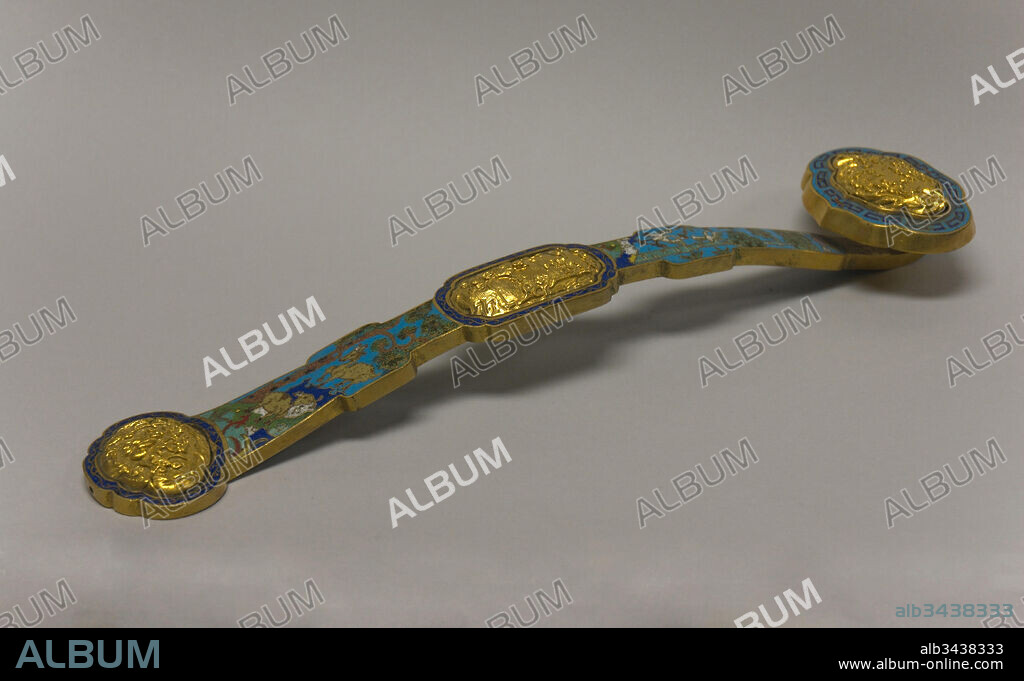alb3438333
Ruyi Scepter, Qing dynasty (1644–1911), 18th–19th century, China, Cloisonné enamel with gilt-bronze medallions, L. 17 1/2 in. (44.5 cm), Cloisonné, One translation of the Chinese term ruyi is 'as you wish,' and scepters in this shape were often given as gifts because of the good wishes they implied. Although they may have had certain ritual functions, scepters frequently appeared in displays, either placed on stands or in vases and brush pots alongside other functional and/or exotic goods.

|
Añadir a otro lightbox |
|
Añadir a otro lightbox |



¿Ya tienes cuenta? Iniciar sesión
¿No tienes cuenta? Regístrate
Compra esta imagen.
Selecciona el uso:

Descripción:
Ver traducción automática
Ruyi Scepter, Qing dynasty (1644–1911), 18th–19th century, China, Cloisonné enamel with gilt-bronze medallions, L. 17 1/2 in. (44.5 cm), Cloisonné, One translation of the Chinese term ruyi is 'as you wish,' and scepters in this shape were often given as gifts because of the good wishes they implied. Although they may have had certain ritual functions, scepters frequently appeared in displays, either placed on stands or in vases and brush pots alongside other functional and/or exotic goods
Crédito:
Album / quintlox
Autorizaciones:
Modelo: No - Propiedad: No
¿Preguntas relacionadas con los derechos?
¿Preguntas relacionadas con los derechos?
Tamaño imagen:
5535 x 3393 px | 53.7 MB
Tamaño impresión:
46.9 x 28.7 cm | 18.4 x 11.3 in (300 dpi)
Palabras clave:
1644-1911 • CHINA • DINASTIA CH'ING • EXOTICO • FORMA • FUNCIONALES • JARRONES • MERCANCIAS • PUESTO • SHAPE
 Pinterest
Pinterest Twitter
Twitter Facebook
Facebook Copiar enlace
Copiar enlace Email
Email
